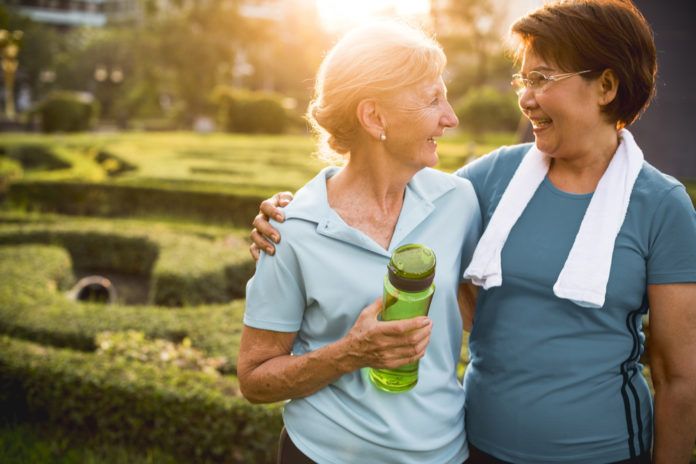Interestingly, there is not a universally accepted definition of balance, but rather a collection of descriptions adopted by healthcare professionals. Described by the Merriam-Webster dictionary, balance can be defined as “stability produced by even distribution of weight on each side of the vertical axis,” “physical equilibrium,” and “a counterbalancing weight, force, or influence,” only to name a few. But more specifically when it comes to the body, maintaining balance is the ability to stay upright or in control of movements. And though balance is important across all lifespans, it can hold significant value in seniors.
What Are Balance Disorders?
According to the National Institute on Deafness and Other Communication Disorders (NIDCD), “your sense of balance relies on a series of signals to the brain from several organs and structures in the body, which together are known as the vestibular system.” The mechanism is quite detailed and convoluted, yet the negotiation of good balance may be related to medications, ear infections, a head injury, low blood pressure, conditions affecting skeletal or visual systems, arthritis, and rising age. If experiencing a balance problem or disorder, the following symptoms may arise:
- Staggering when trying to walk
- Teetering or falling when standing up
- Feeling dizzy or experiencing vertigo (a spinning sensation)
- Blurring vision
- Being confused or disoriented
Symptoms other than direct feelings of imbalance include nausea and vomiting, diarrhea, heart rate and pressure changes, fear, anxiety, and panic.
The Importance of Senior Balance Exercises
As mentioned, age is a risk factor to impaired balance, as it naturally declines if not being proactive towards its maintenance. In fact, each year more than two million senior adults go to the emergency room due to a fall-related injury. Even the smallest of falls can result to large injuries, leading to tremendous pain and require extensive recovery. While aging is inevitable, poor balance and injury does not necessarily have to be. By practicing these seven balance exercises for seniors, balance can be improved and retained.
1. Weight Shifts
Whether side sways or forward steps, weight shifts encourage coordination and provide strength to the lower body. Find information and instruction regarding weight-shifting exercises here.
2. Single Leg Stance
Despite its promotion for all age groups, a single a leg stance can be a simple, in-home balance exercise for seniors. This video can help direct you into effectively, and safely, practicing the single leg stance.
3. Step-Ups
Using in-home steps with a railing or near a wall for best support, step up with right leg and follow with the left. Step back down and repeat for at least five times per leg.
4. Marching
Beat to your own drum and march to improve balance! Despite the modest movement of marching, it has shown to encourage stability.
5. Bicep Curls
Whereas this balance exercise is more rigorous and complex compared to the others mentioned, bicep curls with a dumbbell can help promote upper body strength whilst still fostering good balance.
6. Heel-To-Toe Walk
As if you were balancing on a tightrope, step one foot in front of the other in a straight line. Place the stepping foot in front of the other, touching heel-to-toe, with arms fled out for balance (if needed). Try to keep looking forward and practice against a wall for supplementary support.
7. Tai Chi
The fluid, gentle movements of the ancient Chinese practice is promoted for all ages. Tai chi is shown to not only strengthen the body but encourages the mind-body connection. Expanding to both physical and mental health can help prevent falls and inspire and hearten quality of life. While group classes are generally offered locally, various DVD tai chi programs allow seniors to stay at home. An example program includes Dr. Paul Lam’s Thai Chi for Health, as his lessons have been recommended by the Centers of Disease Control (CDC), Arthritis Foundations, and other numerous organizations. Find more information on the Dr. Lam’s series at the Tai Chi for Health Institute homepage.
Before participating in any sort of exercise routine, you should always consult with a primary care provider to diminish the risk of potential accidents and assistance for additional guidance. Although recommendations and advice of each exercise are offered above, have a sturdy chair or person nearby to assist if you start to feel unsteady. The exercises can be completed as tolerated, though never try to overdo it if feeling uncomfortable. If the exercises start to become a little more effortless, try to challenge the body by only using one hand on the chair, wall, or person or dismissing them all together. Whichever practice you decide, balance exercises for older adults can truly be advantageous!






